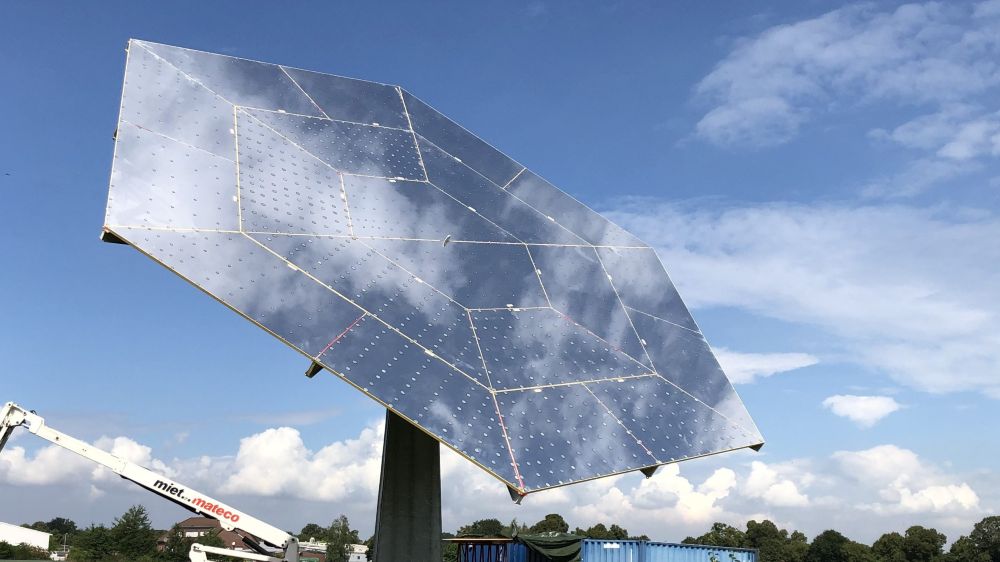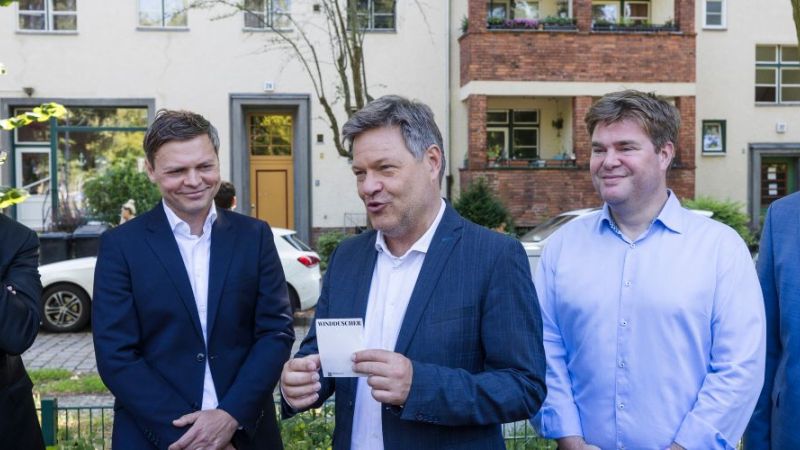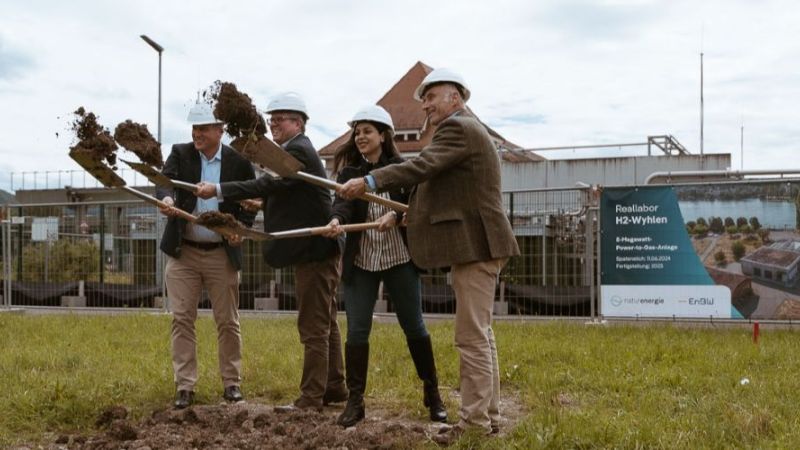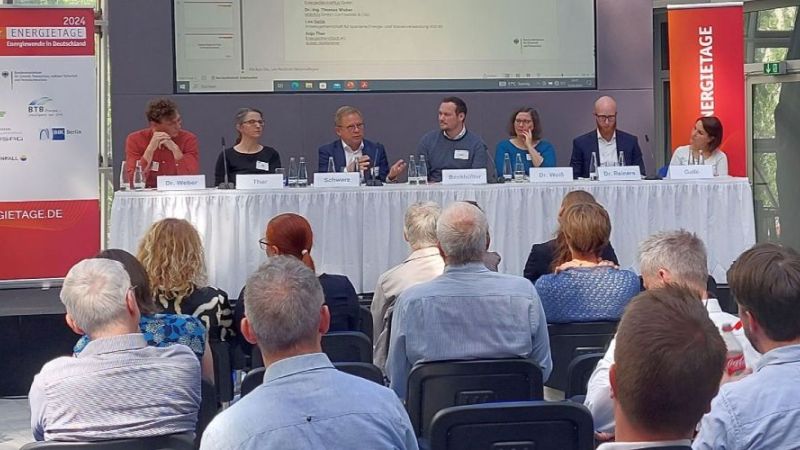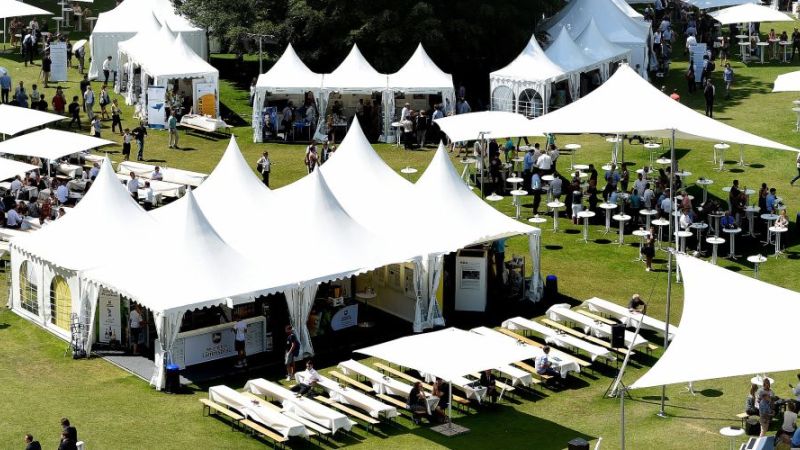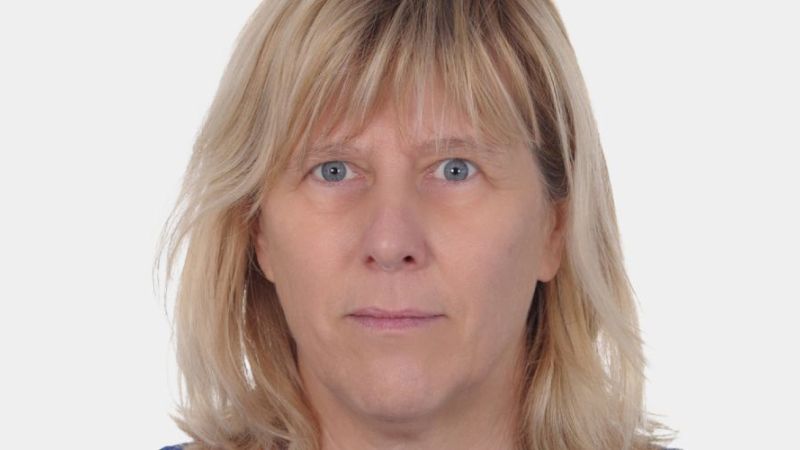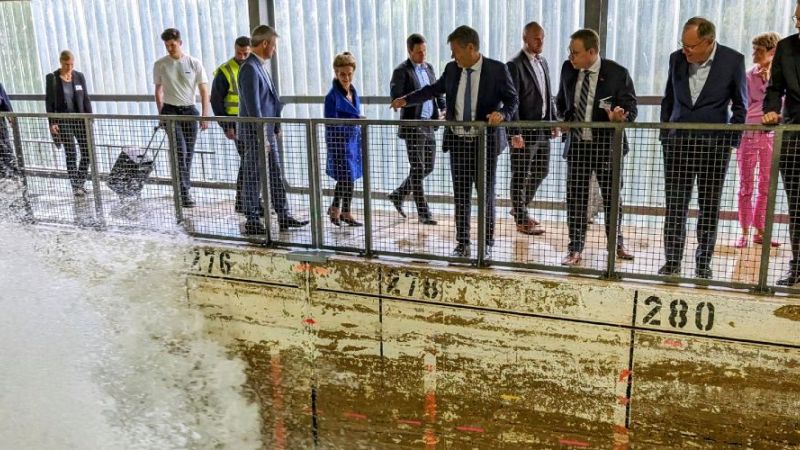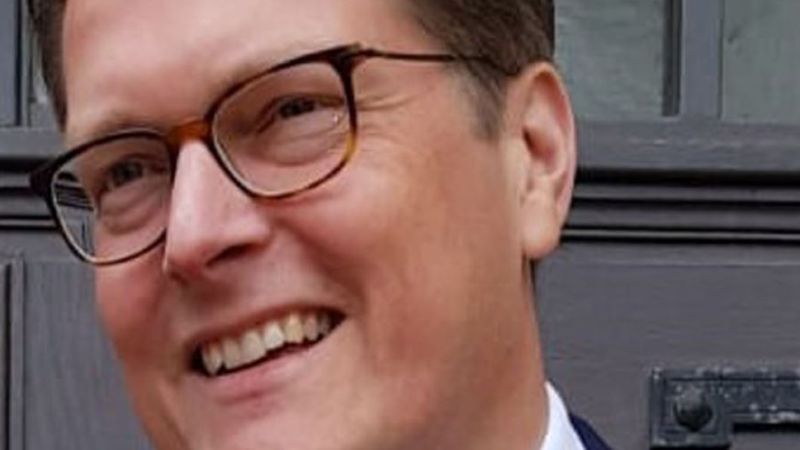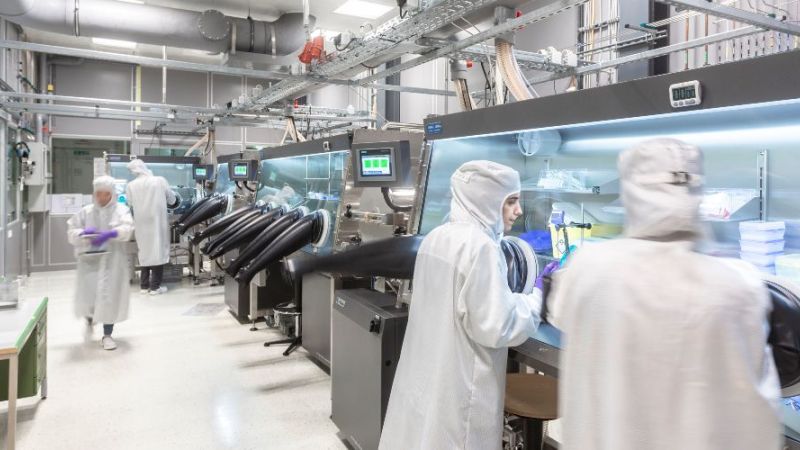 © HAMI SOLAR THERMAL POWER CORPORATION LIMITED
© HAMI SOLAR THERMAL POWER CORPORATION LIMITED
Solar thermal power plants
Sharp focus with sandwich heliostats
In sunny regions, solar tower power plants are suitable for renewable energy generation because of their high efficiency. This is why various research efforts are aimed at further reducing the cost of this technology in order to be able to tap into a larger market. A new design of the concentrator is expected to contribute to this. The teams of scientists have been able to prove the required dimensional stability and durability or the developed sandwich mirror panel, which is made of thin steel sheets with a core of polyurethane foam, and have built a first heliostat.
Solar tower power plants have a large number of several hundred to over 20,000 rotating mirrors arranged around a tower. The biaxially curved mirrors, also known as heliostats, track the sun and focus the solar irradiation onto the central tip of the solar tower. This is where, in the focal point, the receiver with absorber is located, which can be heated to around 600 to over 1,000 degrees Celsius. A heat transfer medium circulates through this, which transports the heat to a steam turbine with generator to produce electricity.
The heliostat array represents the largest cost factor of a solar thermal power plant, accounting for 30 to 40 per cent of the investment costs. Per square metre, these are around 110 to 150 euros, of which about 40 per cent is accounted for by the concentrator, mirror with support structure. This is where the research project Sahel, short for "More economical heliostats with sandwich concentrator, carousel tracking and optical closed-loop control system" comes in.
New concentrator with thin glass mirror reflects more strongly
The aim of the project teams was to optimise the "Stellio" heliostat from sbp sonne in terms of efficiency and costs. Stellio has a pentagonal shape that allows for a dense heliostat array with little shading compared to rectangular heliostats. At present, "Stellio" is one of the cheapest heliostats available on the market – depending on location and number of units. The concrete plan: Increase efficiency by 5 per cent and reduce costs by 10 to 20 per cent. To do this, the scientists used new thin glass mirrors (1 to 2 millimetres thick) that have a higher reflectivity than the currently used mirrors made of steel and thick glass with a thickness of 4 millimetres. They also built a more precise surface shape so that more light reaches the receiver. However, these adjustments are only possible with a modified design of the concentrator.
For this reason, the engineers used a sandwich mirror panel patented by sbp made of thin steel sheets and PUR foam as a basis and developed it further. PUR foam is mainly composed of polyalcohols, isocyanates, blowing agents and stabilisers. The new sandwich consists of two layers of pre-galvanised steel sheets. In between is a core made of polyurethane with a variable thickness. For this purpose, the Covestro Germany project team researched a special polyurethane compound that has the desired properties, such as dimensional stability and durability. The new sandwich allows thin glass mirrors with high reflectivity to be used. Radial bars provide the necessary stiffness; they too were constructed in a sandwich configuration according to the same principle.
Sandwich heliostats have advantages
Sandwich heliostats have a high degree of efficiency. The PUR core supports the mirror over its entire surface so that it retains its exact shape permanently. In addition, the thin glass mirror absorbs only little light and the yield can be increased. Sandwich structures also require only a few individual parts for their construction and are also less susceptible to damage from hailstorms, as the PUR core material has an energy-absorbing effect.
Within the Sahel project, the project teams planned, manufactured, installed, measured and optimised a sandwich concentrator in detail on the basis of the measurement values. The results obtained showed that the new concentrator has a high optical quality. They then both estimated the costs for series production and carried out a lifecycle analysis in order to be able to evaluate statements on the ecological footprint in comparison to the Stellio heliostat. The "Sahel variant" is characterised by slightly higher CO2 emissions overall. The reason for this: The PUR foam and the higher steel insert in the concentrator have a greater impact on emissions than the lower glass insert. There is still a need for optimisation here.
Lifetime and long-term stability of a new component represent important criteria for later commercial use. That is why the DLR and Covestro project teams have developed a special long-term laboratory test. The new test method has enabled them to prove both the required lifetime and the dimensional stability of the sandwich construction.
The projected costs for the new heliostats are in the range of proven steel truss structures with 4-millimetre mirrors. The efficiency is slightly higher because thin glass mirrors with a thickness of 1 to 2 millimetres are used instead of the usual 4 millimetres. In addition, there are higher costs for the polyurethane used.
Small heliostats for modular power plants
At present, the new concept could be suitable for smaller concentrators with less than 50 square metres of mirror surface. These can be made from one piece. In larger plants, the concentrator is made up of many smaller sandwich elements. These work steps are time-consuming and each joining step reduces the achievable precision and increases the costs.
The demand for smaller heliostats for modular power plants is currently increasing. These are plants that are composed of several small power plants. That means: Heliostat array, heliostats and tower with receiver are smaller in size. Here, the concentrator developed as a so-called "mono-facet", in which the complete surface is manufactured in one piece in one process, could be successful.
Heliostats follow the position of the sun
A novel mechanical carousel tracking system patented by the DLR is expected to save an additional 20 per cent of the heliostat array costs in the long term. The scientists are furthermore working on a new closed-loop control system. The idea is to use information about the actual orientation of the concentrator. This requires optical sensors that, for example, provide a video image in order to correct the control signal if necessary. This allows the concentrator to track the position of the sun more precisely. The efficiency of the power plant could be increased, thus further reducing costs. (mm)


